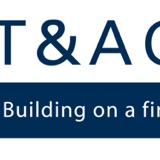Title Page
-
Site conducted
-
Conducted on
-
Prepared by
-
Project Manager
-
Site Manager
-
Location
-
MARKING CRITERIA – RISK AND ACTION BASED MARKING
Notes:
a) Use the most dominant column in the schedule to determine score allocated.
b) Depending on the circumstances, one or more columns may be dominant e.g., ‘Vibration White Finger’ may be a ‘1’ but clearly would not cause a fatality or ‘No Welfare’ could be a ‘0’ but would not be extremely dangerous.
MARK - TITLE - SEVERITY - EFFECT - ACTION
Scoring:
1 Very Poor (Stop Works)
2 Poor (Immediate Action Required)
3 Non-Conformance (Improvement Required)
4 Good Practice
5 Very Good / Excellent (Exceeding company expectations / H&S Innovation)
Yes/No = automatic score of 0 or 5
Overall Scores:
85.1-90% Excellent
80.1-85% Good
78.1-80% Unsatisfactory
0-78% Urgent Action Required
The author believes that the information contained within this report to be correct at the time of printing.
H&S Audit
1. Access & Egress
-
1.1 Site entrance conditions
- N/A
- 1
- 2
- 3
- 4
- 5
-
1.2 Hoarding
- N/A
- 1
- 2
- 3
- 4
- 5
-
1.3 Internal walking routes
- N/A
- 1
- 2
- 3
- 4
- 5
-
1.4 Green Route
- N/A
- 1
- 2
- 3
- 4
- 5
-
1.5 Vehicle routes
- N/A
- 1
- 2
- 3
- 4
- 5
-
1.6 Site Register (All operatives and visitors signing in/out)
-
Add photos to section
-
Description of photos
-
Action and/or Comments
2. Emergency Systems
-
2.1 Means of raising alarm
- N/A
- 1
- 2
- 3
- 4
- 5
-
2.2 Fire points
- N/A
- 1
- 2
- 3
- 4
- 5
-
2.3 First Aid Arrangements
- N/A
- 1
- 2
- 3
- 4
- 5
-
Note: Any site with a defibrillator (AED) shall be awarded 5 for first aid arrangements
-
2.4 Training
- N/A
- 1
- 2
- 3
- 4
- 5
-
Add photos to section
-
Additional Comments
3. Housekeeping
-
3.1 Office / Meeting Rooms
- N/A
- 1
- 2
- 3
- 4
- 5
-
3.2 Welfare areas
- N/A
- 1
- 2
- 3
- 4
- 5
-
3.3 Obstructions / hazards
- N/A
- 1
- 2
- 3
- 4
- 5
-
3.4 Site Cleanliness
- N/A
- 1
- 2
- 3
- 4
- 5
-
3.5 Cable Management
- N/A
- 1
- 2
- 3
- 4
- 5
-
3.6 Storage of Materials
- N/A
- 1
- 2
- 3
- 4
- 5
-
Add photos to section
-
Additional Comments
4. PPE
-
4.1 Compliance with 3 point PPE policy
-
4.2 Task PPE in line with Risk Assessments
- N/A
- 1
- 2
- 3
- 4
- 5
-
4.3 General PPE Arrangements
- N/A
- 1
- 2
- 3
- 4
- 5
-
4.4 Visitor PPE (suitably stored in a range of sizes)
- N/A
- 1
- 2
- 3
- 4
- 5
-
Add photos to section
-
Additional Comments
5. Work at Height
-
5.1 Edge protection in place
- N/A
- 1
- 2
- 3
- 4
- 5
-
5.2 Harness
- N/A
- 1
- 2
- 3
- 4
- 5
-
5.3 Scaffolding (condition)
- N/A
- 1
- 2
- 3
- 4
- 5
-
5.4 Towers / MEWPS
- N/A
- 1
- 2
- 3
- 4
- 5
-
5.5 Ladders / Steps / Podiums
- N/A
- 1
- 2
- 3
- 4
- 5
-
5.6 MEWP / PECO
- N/A
- 1
- 2
- 3
- 4
- 5
-
Add photos to section
-
Additional Comments
6. Protection of the Public
-
Is this section applicable?
-
6.1 Signage and Information
- N/A
- 1
- 2
- 3
- 4
- 5
-
6.2 Traffic marshals
- N/A
- 1
- 2
- 3
- 4
- 5
-
6.3 Gates / doors secured
- N/A
- 1
- 2
- 3
- 4
- 5
-
6.4 Security
- N/A
- 1
- 2
- 3
- 4
- 5
-
6.5 Public Routes
- N/A
- 1
- 2
- 3
- 4
- 5
-
Add photos to section
-
Additional Comments
7. Welfare
-
7.1 Designated Smoking Area
- N/A
- 1
- 2
- 3
- 4
- 5
-
7.2 Means of heating Food and Water
- N/A
- 1
- 2
- 3
- 4
- 5
-
7.3 Tables and Chairs with back rests
-
7.4 Drying room
- N/A
- 1
- 2
- 3
- 4
- 5
-
7.5 Handwashing Facilities (Hygiene)
- N/A
- 1
- 2
- 3
- 4
- 5
-
7.6 Toilet facilities
- N/A
- 1
- 2
- 3
- 4
- 5
-
7.7 Drinking water available
-
Add photos to section
-
Additional Comments
8. Information and Signage
-
8.1 Noticeboard
-
8.2 CCS Signage and Information
- N/A
- 1
- 2
- 3
- 4
- 5
-
8.3 Emergency contacts
- N/A
- 1
- 2
- 3
- 4
- 5
-
8.4 Internal Signage
- N/A
- 1
- 2
- 3
- 4
- 5
-
8.5 Subcontractor Safety League Board
- N/A
- 1
- 2
- 3
- 4
- 5
-
Note: Standard sub-contractor board not issued yet therefore 5 if sites have implemented a board otherwise N/A until the process is released
-
8.6 EHS Promotional Material (Posters, Spotlights, Safety Alerts)
- N/A
- 1
- 2
- 3
- 4
- 5
-
Add photos to section
-
Additional Comments
9. Electrical
-
9.1 Isolation certs, Permits, Installation certs
- N/A
- 1
- 2
- 3
- 4
- 5
-
9.2 110v Equipment in use
-
9.3 Portable Appliance Tests and Temporary Electrical Installation Inspections
- N/A
- 1
- 2
- 3
- 4
- 5
-
9.4 Fit for purpose
-
9.5 Warning Signage and Protection
- N/A
- 1
- 2
- 3
- 4
- 5
-
Add photos to section
-
Additional Comments
10. Plant and Work Equipment
-
10.1 Tool Storage
- N/A
- 1
- 2
- 3
- 4
- 5
-
10.2 Guards in use
-
10.3 Maintenance/Inspections (i.e. PUWER register)
- N/A
- 1
- 2
- 3
- 4
- 5
-
10.4 Safe operation of plant
- N/A
- 1
- 2
- 3
- 4
- 5
-
10.5 Trained / competent user
- N/A
- 1
- 2
- 3
- 4
- 5
-
Add photos to section
-
Additional Comments
11. Lifting Equipment, Appliances and Operation
-
11.1 Planning and SSOW
- N/A
- 1
- 2
- 3
- 4
- 5
-
11.2 Lifting Operations Management
- N/A
- 1
- 2
- 3
- 4
- 5
-
11.3 Inspection, Testing, Examination
- N/A
- 1
- 2
- 3
- 4
- 5
-
11.4 Training and Vetting (inc slingers and operators)
- N/A
- 1
- 2
- 3
- 4
- 5
-
11.5 Rescue Plan (inc training and kit)
- N/A
- 1
- 2
- 3
- 4
- 5
-
Add photos to section
-
Additional Comments
12. Manual Handling
-
12.1 Assessments in place
- N/A
- 1
- 2
- 3
- 4
- 5
-
12.2 Safe Working Practices (i.e. boards stacked horizontally)
- N/A
- 1
- 2
- 3
- 4
- 5
-
12.3 Manual handling aids
- N/A
- 1
- 2
- 3
- 4
- 5
-
12.4 Training for operatives (including evidence of MHO TBT)
- N/A
- 1
- 2
- 3
- 4
- 5
-
Add photos to section
-
Additional Comments
13. Asbestos
-
Is the section applicable?
-
13.1 Is an Asbestos Survey available?
- N/A
- No
- Yes
-
13.2 Safe Working Practices
- N/A
- 1
- 2
- 3
- 4
- 5
-
13.3 Reassurance monitoring & Clearance certificate
- N/A
- 1
- 2
- 3
- 4
- 5
-
13.4 Awareness training
- N/A
- 1
- 2
- 3
- 4
- 5
-
Add photos to section
-
Additional Comments
14. Excavation
-
Is this section applicable?
-
14.1 Excavation Works Planned (surveys, scans and investigations undertaken?)
- N/A
- 1
- 2
- 3
- 4
- 5
-
14.2 Permits to Dig / Confined Spaces Permits
- N/A
- 1
- 2
- 3
- 4
- 5
-
14.3 Excavation Support
- N/A
- 1
- 2
- 3
- 4
- 5
-
14.4 Edge Protection (physical barriers, stop blocks)
- N/A
- 1
- 2
- 3
- 4
- 5
-
14.5 Excavation Inspection (arrangements and recording)
- N/A
- 1
- 2
- 3
- 4
- 5
-
Add photos of section
-
Additional Comments
15. Induction and Training
-
15.1 Induction materials available & records maintained
-
15.2 Workforce competency & compliance checks (5 for use of CSCS card checker)
- N/A
- 1
- 2
- 3
- 4
- 5
-
15.3 Occupational health questionnaires
- N/A
- 1
- 2
- 3
- 4
- 5
-
15.4 Toolbox Talks (TBT)
- N/A
- 1
- 2
- 3
- 4
- 5
-
15.5 Daily Briefing (DABS)
-
Add photos to section
-
Additional Comments
16. CDM Documentation
-
16.1 Pre-construction info
- N/A
- 1
- 2
- 3
- 4
- 5
-
16.2 CPP
-
16.3 Communication with CDM parties
- N/A
- 1
- 2
- 3
- 4
- 5
-
16.5 General awareness / training
- N/A
- 1
- 2
- 3
- 4
- 5
-
16.4 HSEQ Meetings
- N/A
- 1
- 2
- 3
- 4
- 5
-
Add photos to section
-
Additional Comments
17. Temporary Works
-
Is this section applicable?
-
17.1 T.W.C and T.W.S
- N/A
- 1
- 2
- 3
- 4
- 5
-
17.2 Temporary Works Register
- N/A
- 1
- 2
- 3
- 4
- 5
-
17.3 Design Brief (Drawings & Calculations included)
- N/A
- 1
- 2
- 3
- 4
- 5
-
17.4 Permits
- N/A
- 1
- 2
- 3
- 4
- 5
-
17.5 Inspections
- N/A
- 1
- 2
- 3
- 4
- 5
-
Add photos to section
-
Additional Comments
18. Fire and First Aid
-
18.1 Fire Risk Assessment completed
-
18.2 Storage of Gas Bottles, Oxygen and Liquid Fuel
- N/A
- 1
- 2
- 3
- 4
- 5
-
18.3 Fire Drill (6 monthly)
-
18.4 Weekly Fire Safety Inspections
- N/A
- 1
- 2
- 3
- 4
- 5
-
18.5 Weekly Fire Alarm Test
-
18.6 First Aid Assessment completed
-
18.7 Emergency Procedures and Plan
- N/A
- 1
- 2
- 3
- 4
- 5
-
18.8 Fire & First Aid Signage
- N/A
- 1
- 2
- 3
- 4
- 5
-
Add photos to section
-
Additional Comments
19. Supervision and Monitoring
-
19.1 Site Supervisors / Managers Inspections (Weekly)
- N/A
- 1
- 2
- 3
- 4
- 5
-
19.2 Actions completed since the last HSEQ inspection and/or managers inspection
-
19.3 Sub-Contractor on-site Manager/Supervisor
- N/A
- 1
- 2
- 3
- 4
- 5
-
19.4 Management Training Records
- N/A
- 1
- 2
- 3
- 4
- 5
-
19.5 Near Miss Reporting
- N/A
- 1
- 2
- 3
- 4
- 5
-
19.6 Incident Reporting
- N/A
- 1
- 2
- 3
- 4
- 5
-
19.7 Project / Progress Meetings (co-ordination meeting)
-
Add photos to section
-
Additional Comments
20. Risk Assessments and Method Statements
-
20.1 CCL RAMS in place (for all CCL works)
-
20.2 Sub-Contractors RAMS
-
20.3 Chemical (COSHH Assessments, Dust, Explosives, radiation)
- N/A
- 1
- 2
- 3
- 4
- 5
-
20.4 Biological (Contamination, Leptospirosis, Legionella, Covid-19)
- N/A
- 1
- 2
- 3
- 4
- 5
-
20.5 Noise & HAVS assessments
- N/A
- 1
- 2
- 3
- 4
- 5
-
20.6 Permit To Work Systems
- N/A
- 1
- 2
- 3
- 4
- 5
-
20.7 CCL RAMS Review Form Completed by Site Manager
-
Add photos to section
-
Additional Comments
21. Environmental
-
21.1 Site Environmental Management Plan
-
21.2 Spill kits and hazardous waste bins.
- N/A
- 1
- 2
- 3
- 4
- 5
-
21.3 Storage of Chemicals and Fuel
- N/A
- 1
- 2
- 3
- 4
- 5
-
21.4 Training
- N/A
- 1
- 2
- 3
- 4
- 5
-
Add photos to section
-
Additional Comments
22. Waste Management
-
22.1 Waste Management Plan
-
22.2 Skips / Bins (secure, waste separated, signposted, contained)
- N/A
- 1
- 2
- 3
- 4
- 5
-
22.3 Waste Transfer Notes / Consignment Notes (WTN/CN)
- N/A
- 1
- 2
- 3
- 4
- 5
-
22.4 Waste Carriers License (WCL)
- N/A
- 1
- 2
- 3
- 4
- 5
-
22.5 Waste Liquids Storage
- N/A
- 1
- 2
- 3
- 4
- 5
-
Add photos to section
-
Additional Comments
23. Environmental Impact
-
23.1 Environmental Noise & Vibration
- N/A
- 1
- 2
- 3
- 4
- 5
-
23.2 Dust
- N/A
- 1
- 2
- 3
- 4
- 5
-
23.3 External appearance of site
- N/A
- 1
- 2
- 3
- 4
- 5
-
23.4 Neighbourhood communication (meetings, community noticeboard, newsletter).
- N/A
- 1
- 2
- 3
- 4
- 5
-
Add photos to section
-
Additional Comments
Signature
-
Signed by HSEQ Manager
-
Signed by Site/Project Manager












